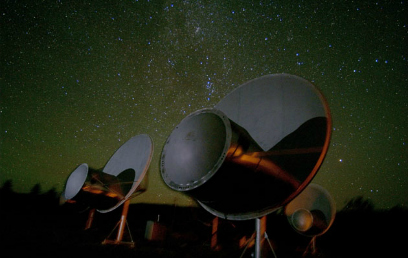SETI Plugs the Phone Back In
The Allen Telescope Array is back online
If any of you aliens out there rang our Earth line this summer, would you kindly try dialing in again? After an eight-month down time, SETI — the Search for Extraterrestrial Intelligence — is back up and running this week thanks to an influx of funds. The Allen Telescope Array (ATA) in Northern California, SETI’s primary search facility, was forced into hibernation on April 25 by severe budget cuts. “Hibernation” meant it would be staffed by a skeleton crew to keep the facility safely maintained, but all observations would cease.
ATA started operations in 2007 as the first radio observatory built specifically to scan for intelligent life elsewhere. It was funded primarily through the National Science Foundation and the State of California, through UC Berkeley, which co-operates the Hat Creek Radio Observatory, where ATA is located, with SETI, but both sources slashed their contributions earlier this year. In an April letter to supporters, SETI Institute CEO Tom Pierson said that NSF funding “has been reduced to approximately one-tenth of its former level … compounded by growing State of California budget shortfalls.”
The nonprofit organization spent a summer passing the hat, launching SETI Stars to raise over $200,000 through online donations, including one from Contact star Jodie Foster, and teaming up with the U.S. Air Force, which hopes to use the facility for tracking objects in orbit. Scientists fired up the ATA on Monday, starting with some of the most recent discoveries by NASA’s Kepler space telescope. Jill Tarter, Director of the Center for SETI Research, said in a press release, “For the first time, we can point our telescopes at stars, and know that those stars actually host planetary systems – including at least one that begins to approximate an Earth analog in the habitable zone around its host star.”
The SETI Institute will continue to raise funds to keep the ATA running, and plans to spend the next two years studying the Kepler catalog. On the same day ATA went back online, the Kepler team confirmed they’d found their first planet, Kepler 22-b, orbiting in the habitable zone of a star similar to our sun.
